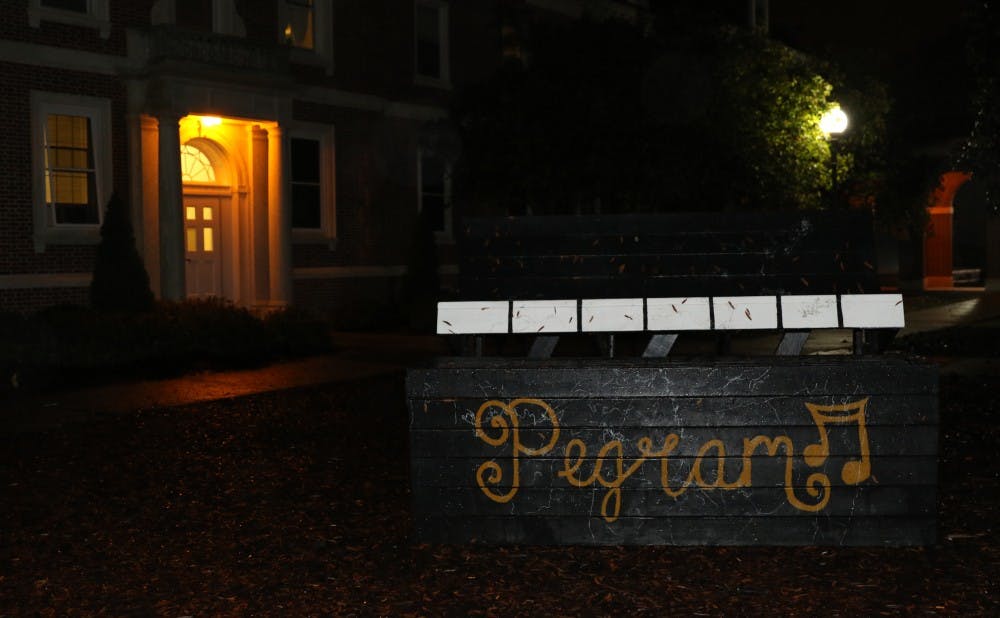Unfamiliarity with the Duke Alert decision-making process has caused some students to be concerned about the lack of alerts following recent incidents on and near campus.
Duke Alerts—which are sent out by the Duke University Police Department to notify the Duke community about emergencies on campus—include text messages, email, social media and sirens, as well as posts on DUPD’s website. Michael Schoenfeld, vice president for public affairs and government relations, explained that the Duke Alert system is utilized in the event of potential risks to the Duke community such as crimes and severe weather warnings.
“Timely warnings are required for reports of defined crimes, in specific locations, which pose an ongoing risk,” Schoenfeld, who responded on behalf of DUPD Chief of Police John Dailey and Vice President for Administration Kyle Cavanaugh, wrote in an email. “The decision to send a timely warning is made by a team of university leaders acting on the best information they have available at the time.”
DUPD assesses each incident on a case-by-case basis to determine whether an immediate alert to the Duke community is necessary, he explained. He noted that a team is on call at all hours of the day, 365 days a year, to issue an alert if needed, though he did not disclose who made up the team.
Duke Alerts are issued only for incidents on Duke’s campus, and the Duke community is generally not notified of crimes occurring at neighboring universities or in the Durham area, such as the shooting and brief lockdown at North Carolina Central University Oct. 25, Schoenfeld explained. However, he noted that there could be exceptions if the incidents take place close to campus.
The process of sending out Duke Alerts has been in place for about a decade, beginning as posts to DUPD’s website and since evolving to include other media outlets. Schoenfeld noted that after the tragic shooting at Virginia Tech in 2007, federal laws were implemented requiring universities and colleges to offer immediate ways of alerting people on campus of emergencies.
Students, faculty and staff at Duke are automatically registered to receive Duke Alerts via email and are able to sign up for text messaging alerts as well. Students can register to receive Duke Alerts via text message by listing their cell phone number in their profile on ACES, and faculty and staff can register by adding their cell phone numbers to the Duke@Work self-service website.
Schoenfeld explained that because the focus of the Duke Alert system is to notify people that are on campus, other individuals—including parents of students—are not able to sign up for Duke Alerts. However, alerts are generally posted on the Duke Today website.
Although many students agree that Duke Alerts are beneficial to the Duke community, some argued that there should be more Duke Alerts regarding potential threats near but not on campus.
“Duke Alerts are important for students because otherwise it would be hard for us to know when crimes happen on campus, and it’s important for us to be alert,” junior Nora Ghanem said. “I am curious, though, why we didn’t get a Duke Alert about the intruder in Pegram [Oct. 30]. That would have been really important for freshmen to be aware of.”
Schoenfeld noted that no Duke Alert was sent because the incident, initially thought to be a robbery, was deemed a false report by Duke Police.
Junior Katie Loftus said it was strange that Duke students did not get an alert about the shooter at NC Central and that they should be getting more alerts for occurrences on and around campus.
Despite student concerns, DUPD has received positive responses to the Duke Alert system.
“Through tests and regular feedback, the Duke Alerts have been found to be highly effective and appreciated,” Schoenfeld wrote.
Get The Chronicle straight to your inbox
Signup for our weekly newsletter. Cancel at any time.

